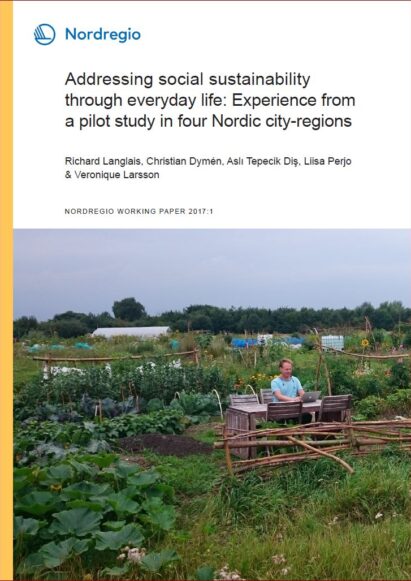Increasing globalization, climate change and shifting demographics are creating a new context for discussion of development and its spatial distribution. This is a new challenge for planners and politicians, who are expected to develop and approve plans encompassing the existing built environment, new settlements and urban infrastructure, at the same time as the context rapidly shifts. This forces a re-assessment of how growth and development are envisioned in planning interventions.
Some policymakers support a major shift towards green growth, based on radical improvements in energy systems, as the new paradigm leading to sustainability. Green growth has been embraced in order to mobilize green investments and to mitigate the current economic and environmental crises. It is often criticized, however, for neglecting the effects on the everyday lives of the individuals who reside in the city-regions where green growth is envisioned. Nordic cities are not only growing, but becoming more culturally and socioeconomically diverse. In that context, the quest for green growth raises profound professional, technical, theoretical and ethical questions for planners and politicians, including implications arising from increased socio-cultural diversity and associated perspectives.
The objective of the pilot study presented here is (1) to consider whether, and if so, how, knowledge about everyday life practices of different groups of women and men are present and integrated into Nordic city-region planning; and (2) to test the usefulness, for researchers and planners, of assessing city-region planning through the eyes of everyday life theory. The research included several interviews, a workshop, and text analysis of documents concerning city-region policy and the processes of sustainable urban and regional planning. Local perspectives were scrutinized through the lens of gender, then extended to consider intersectionality. Intersectionality is a theoretical tool that attempts to foster understanding of a multiplicity of social contexts, including the different discourses of power and their implications for individuals and how they relate to their social, economic and ecological situations.
Preliminary findings indicate that although the theory of everyday life is not a highly visible and literal component of Nordic city-region planning, the four city-regions all, to varying degrees, express its philosophical inclinations. Awareness of everyday life conditions and perspectives, and consequent fundamental objectives, present particular challenges to planners, who are responding with a number of innovative practical approaches.








